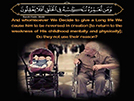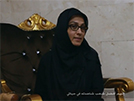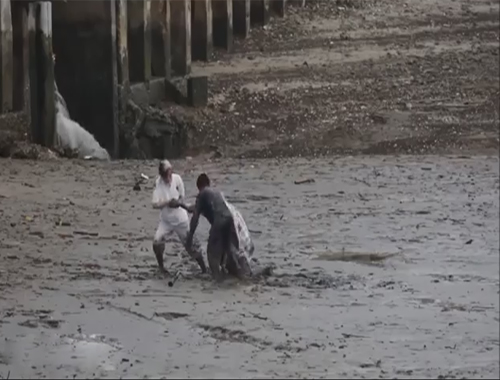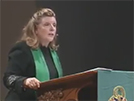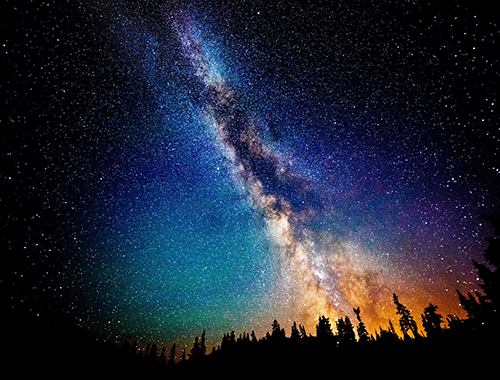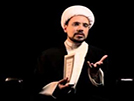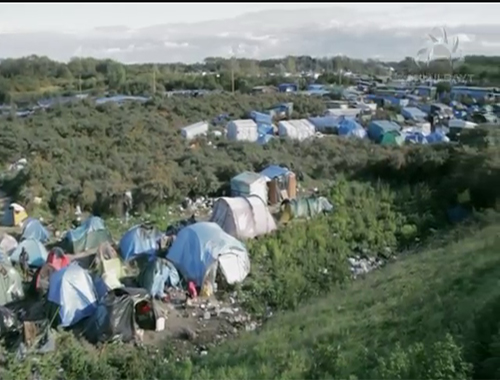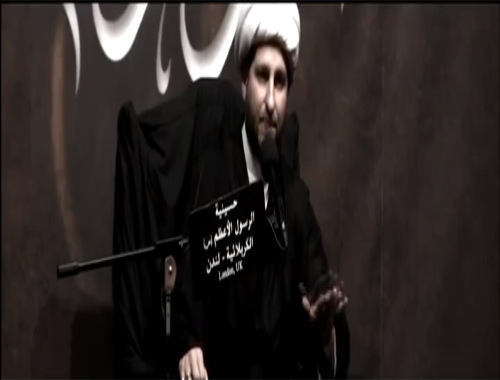TheKa’bah
- Details
- Hits: 2622
TheKa’bah
`It is the first temple ever to be built for men, a blessed place a beacon for the nations' (3:96) and the most ancient of them in the Middle East. It was first built by Ibrahim, the ancestor of the prophets, and Isma'i, his son, and the Qur'an quotes them praying as they raised its walls:
Ùˆ اذیرÙع ابراهیم القوا عدمن البیت Ùˆ اسمعیل ربّنا تقبّل منا انّک انت السّمیع العلیم
And when Ibrahim and Isma'il raised up the foundations of the House (and dedicated it, saying): `Our Lord, accept this from us; Thou hear all and know all'. (2:127)
Isma'il gathered the stones and Ibrahim put them on one another until the walls were raised to the height of a man. Then the Black Stone was put in its place. According to tradition, the Ka'bah (al‑Bayt al‑Atiq) was nine cubits high and had an area of twenty by thirty cubits when Ibrahim (`a) built it. It had two doors, but was without a roof. As to the Black Stone, it is said to have been brought by Gabriel from heaven. It is also said that Adam brought it along with him on his descent from Paradise, that at first it was snow‑white and was blackened by the deeds of men, and so on. There is no harm in not believing any of these stories and the like, nor are we obliged to establish their verity, nor to know the origin of the Stone. All we are obliged to do is to revere it because the Prophet (s) considered it sacred and revered it. If someone asks the secret behind the Prophet's regarding this stone as sacred, all we can say is that only God and His Apostle know best.
According to some traditions the Ka'bah stood as Ibrahim and Isma`il had built it until it was rebuilt by Qusayy ibn Kilab, the fifth ancestor of the Prophet (s). The structure built by Qusayy stood until the time when the Prophet was 35 years old, when a great flood demolished its walls. The Quraysh rebuilt it. When the walls were raised to a man's height the clans disputed as to who should receive the honour of lifting the Black Stone into its place. They almost came to war with one another, if it was not for their making Muhammad the arbiter amongst themselves. The Prophet's solution was. to spread a cloak on the ground. Then taking up the Black Stone he laid it on the middle of the garment. "Let the eldest of each clan take hold of the border of the cloak," he said. "Then lift it up, all of you together." When they had raised it to the right height, he took the Stone and placed it in the corner with his own hands.
May God's benedictions and His mercy be upon you, O Apostle of God! You raised the Stone first with your noble hands from the ground and then put it into its place again with your hands. Thus you made God and man well pleased with you. This event was a definite evidence of your superiority over all, and of your being a `mercy for all the worlds', before your declaration of the apostlehood as after it. Your act was a clear sign that you were the bearer of a Divine mission, and that those who rejected you were enemies and opponents of the truth and of humanity.
The Ka'bah remained in its condition until Yazid ibn Mu'awiyah became caliph and till `Abd Allah ibn al‑Zubayr challenged his sovereignty over the Hijaz. Yazid's forces installed catapults on the hills around Makkah and bombarded the Ka'bah with tens of thousands of stones. The Ka'bah caught fire which finally demolished its structure. Ibn al‑Zubayr repaired it as it was before without making any changes, and he put a wooden fence around it. When `Abd al‑Malik ibn Marwan came to power, Ibn al‑Zubayr was besieged by his forces under al‑Hajjaj ibn Ynsuf, who ultimately killed Ibn al‑Zubayr after causing damage to a part of the Ka'bah. Al‑Hajjaj rebuilt the demolished portions and made some changes in the walls as they used to be, and also had one of its doors (the `western door') blocked.
The Ka'bah remained in the altered condition after al‑Hajjaj's repairs until the year 1040/1630 when its walls collapsed due to heavy rains. Thereat the Muslims from every corner gathered together to restore it and collected contributions from various regions of the Muslim world to rebuild it in the form as it stands to this day.

